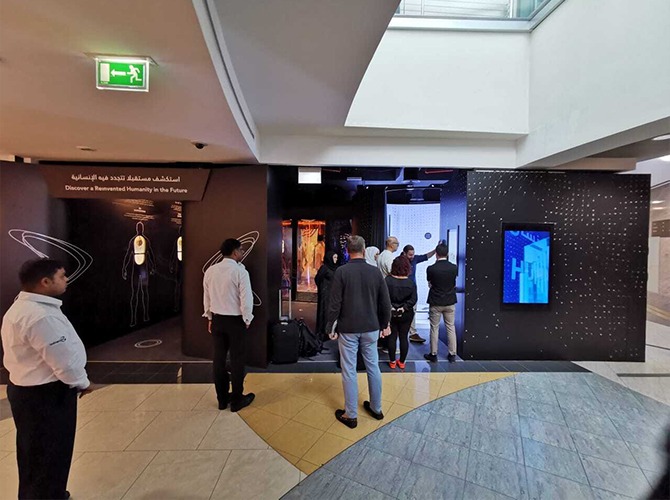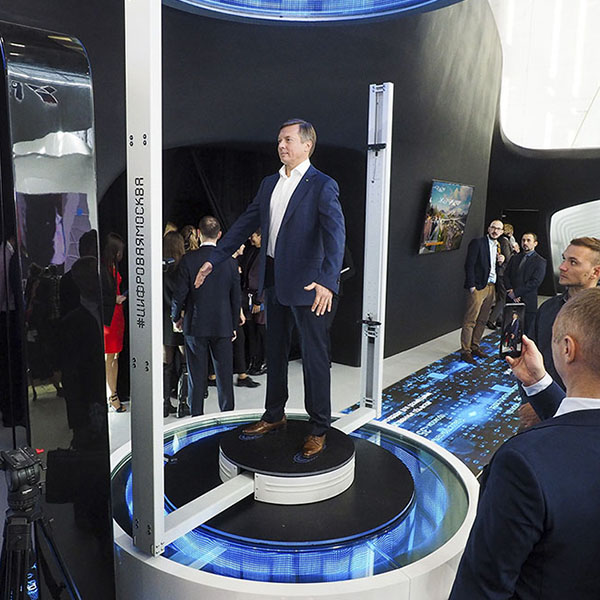Russian computer vision technology start-up Texel has raised $1.5m in funding to finance the expansion of its proprietary 3D scanning technology into the retail sector. The company’s third round of investment was led by Rusnano Sistema and return investors Internet Initiative Development Fund (IIDF).
Texel is building a system for customers to try on clothes online in virtual reality fitting rooms through an avatar of themselves, produced using 3D scanning techniques. The additional funding will enable the firm to scale its business and grow its presence in international markets.
“The online clothing market was the first to mature for the introduction of digital twins of buyers. Next in line are health, fitness, VR, and computer games. Although our products are still at an early stage of development, we have already received positive feedback from the market”, said Sergey Klimentiev, Co-Founder of Texel. “This funding will allow us to continue our dynamic development.”

3D human scanning
Founded in 2014, Texel is a software developer and manufacturer of professional 3D scanners, and its current range of products includes the Texel Portal MX and the Texel Portal BX 3D scanners. Leveraging its proprietary scanning technology and deep machine learning algorithms, the company can also make 3D digital copies of people and large objects.
The scanners have been shipped globally to 23 countries, reportedly enabling Texel to build the largest databases of color 3D scans globally. Over the past six years, the company has created approximately 105,000 models, with around 2,000 new models added each month. Building on its sizable portfolio of data, the firm has launched two critical technologies to produce its avatars.
Texel’s parametric model of the human body uses smartphone photos to calculate measurements. The firm’s secondary system is a generative neural network that makes it possible for clients to ‘wear’ the clothes online. Together, these make up the foundations of the company’s virtual fitting room, shapometry.com, currently completing closed beta testing.
“Texel has a strong team with a large background and technological competencies,” explained Sergey Protas, representative of the Rusnano Sistema Foundations. “We also have a unique data set of 3D models of the human body, which is extremely important for machine learning algorithms.”

Digital avatars in the clothing industry
Texel has recently joined the UK based Future Fashion Factory (FFF) and plans to deploy its technology to reduce time to market cycles, waste, and enhance the overall digital customer experience. According to the company, standard mannequins lack adequacy, as they fail to fit the proportions of real buyers, and using CAD files can reduce the need to sew samples.
The firm’s new system potentially paves the way for mass customization, as it allows manufacturers to produce new collections to demands of the real audience. According to Klimentiev, it’s only a matter of time before its technology is widely adopted by “Facebook, Instagram, Snapchat, and TikTok, hopefully, thanks to Texel technology. We believe that it is a matter of time before every customer has a digital avatar.”
Although Texel’s virtual fitting room will increase the price of affected clothing by 10 percent, the company predicts that its system will improve customer satisfaction, reducing 50 percent returns. Additionally, as 85 percent of returns are due to wrong sizing, eliminating the ambiguity of fit and suitability could lead to further reductions in customer refunds.
Ilya Korolev, IIDF Portfolio Manager, said Texel’s unique dataset gives the company an advantage over its competitors. “The team managed to form a unique data set of human sizes, which made it possible to obtain a parametric model that was ahead of the products of most competitors in terms of measurement accuracy,” said Korolev.
“The company is also growing rapidly, developing products that are in demand on the market. All of this has become a compelling argument for us in investing,” added Korolev.

3D printing in the fashion market
The concept of merging technology and fashion to meet client demands in creative industries has been rising for some time.
In September 2018, Austrian company 3Dcopysystems attempted to introduce something similar, creating a full-body scanner capable of digitizing up to 6 people within a few milliseconds. The device, for retail fashion, can scan people and calculate measurements.
Stratasys has also been exploring 3D printing in the fashion industry, through a collaboration with fashionistas Ganit Goldstein and Julia Koerner to optimize PolyJet technology. “I want to introduce a new way of design manufacturing – moving away from mass production to customized design,” said Goldstein.
Another breakthrough, relative to manufacturing, is the MetraSCAN BLACK launched by Creaform. Unlike a body scanner, this device is highly-portable and capable of scanning complex freeform and organic objects.
Nominations for the 2020 3D Printing Industry Awards are still open, let us know who is leading the industry now.
The fourth edition of the 3D Printing Industry Awards Trophy Design Competition is now underway. Enter your design for the chance to win a CraftBot Flow 3D printer.
To stay up to date with the latest 3D printing news, don’t forget to subscribe to the 3D Printing Industry newsletter or follow us on Twitter or liking our page on Facebook.
Are you looking for a job in the additive manufacturing industry? Visit 3D Printing Jobs for a selection of roles in the industry.
Featured image shows 3D digital avatar of human body created by Texel. Image via Texel.


